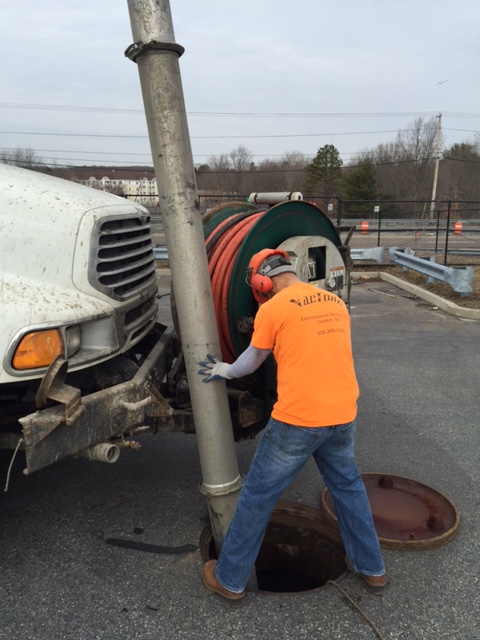
A catch basin, also called a curb inlet or a storm drain inlet, is an opening to a storm drain system which help to prevent debris, trash, or other floating material from entering a drainage system, thereby preventing storm sewer blockages.
Catch basins are responsible for capturing pollutants, sediments, and other decaying debris and preventing them from creating blockages and from entering sewer systems which eventually deposit into local waterways and streams, thus polluting them. Clogged catch basins also cause a nuisance to pedestrians, motorists, and businesses as they cause water to pond along the streets and in parking lots.
It is important to clean catch basins as it prevents clogs in the storm water drain, reduces foul odors, and reduces the loading of suspended nutrients, solids, and bacteria to receiving water bodies. When regular inspection and cleaning procedures are taking place, data about the condition of the physical basin structure and its grate and frame can be gathered. The structure can also convey the quality and condition of the storm water in question.
Parameters for Pollutants
There are certain parameters that indicate what seems to be polluting the storm drain system:
- Discoloration
- Oil sheen
- Debris and trash
The water surface may have a sheen on it due to several reasons, the most common being the presence of petroleum and bacteria. To identify the source of the sheen, one needs to use a pole or a stick to disturb it. Sheen that is caused due to oil remains intact when disturbed, and tends to move around in a swirling fashion, whereas sheen resulting from the presence of bacteria tends to appear blocky and will separate when disturbed. While bacterial sheen isn’t primarily considered a pollutant, it is important that its presence is duly noted.
Presence of Illicit Discharge
If any of the following are noticed at the time of inspection, it may indicate the connection of a sanitary sewer to the storm drain system. This is considered to be an illicit discharge.
- Any foaming, such as from detergent
- Indications of sewer odors or fecal matter
- Fluorescent dye or optical enhancers which are added to laundry detergent
It is important that catch basins are inspected and subsequently cleaned thoroughly on a regular basis, usually annually. If catch basins are located in high-use areas, they may require a more frequent cleaning schedule. The amount of debris, sediment, and organic matter that enters the catch basin can be reduced by performing street sweeping on an appropriate schedule. This in turn reduces how often catch basins need to be cleaned.
Cleaning process
The inspection and cleaning process of a catch basin should address both the sump as well as the grate opening of the basin. It is important that all observations regarding the condition of the structure of the catch basin as well as the quality of water be well-documented.
Disposal of screenings
Any cleaning of catch basins should ideally be deposited in landfills and should be placed in in a drying bed so that the water may evaporate before it is properly disposed of.
